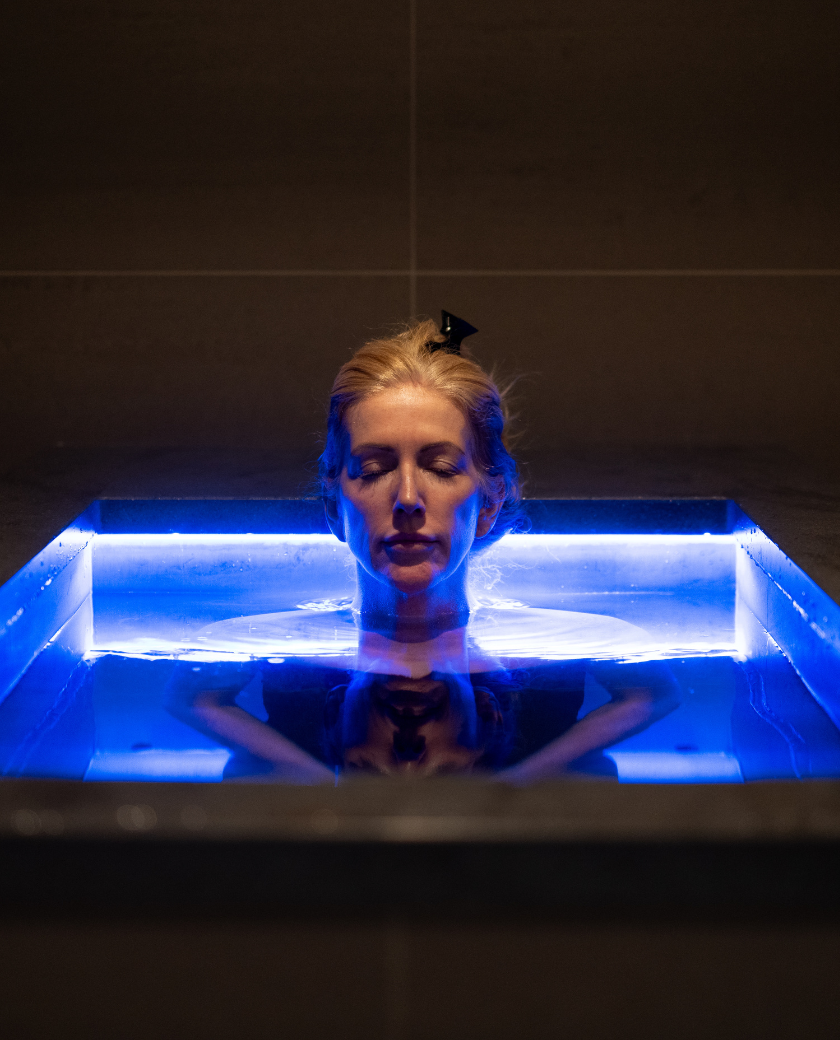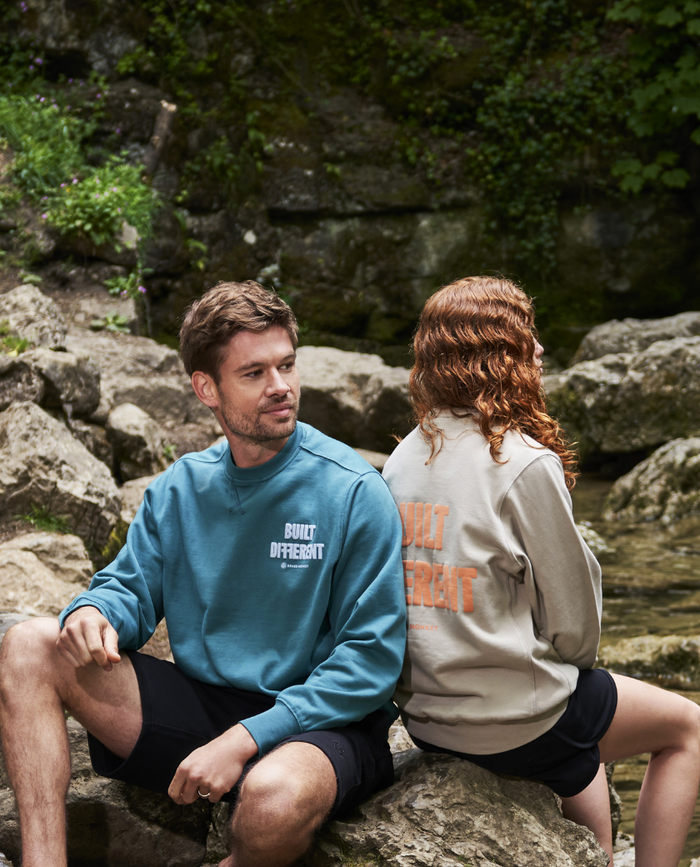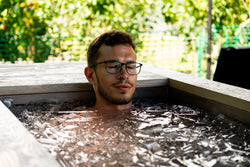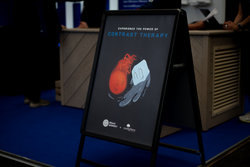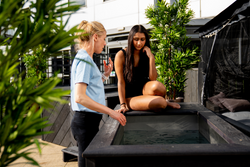Unlock the Power of Contrast Therapy with Dr Susanna Søberg and Slomo Saunas

Brass Monkey x Dr Susanna Søberg and Slomo
 |
 |
 |
 |
 |
 |
The transcript:
Dr. Susanna Søberg: I am very pleased and so happy that I can be here instead, as you call an expert, and that's still so many years now, but I'm still getting used to that title. Being an expert was definitely not what I was thinking about 10 years ago when I got this idea about how cold and heat therapy could actually help our body increase our metabolism. So how can we burn calories? How can we get rid of inflammation in the body?
So, as you can hear, it's a very scientific way of thinking about the body, but it ended up being this search for how we can stay healthy if we use physical activity and how we can stress the body in a healthy way. And it ended up being winter swimming and using the sauna, which today we think about as something happy and joyful. But in a way, I started going into the research, looking at the cells, and ended up finding out that this is actually overall good for both mental and physical health. However, it took me quite a lot of time to figure it all out.
Just to give you an insight into how my research started and why today I am seen as—some say—an expert, or perhaps an ambassador for natural health, I figured out along the way that drugs are really good if you are sick and need help to get healthier. But sometimes, we are sick because of something we did. Our behavior is often the determining factor in lifestyle diseases. Even though we think about the sauna as something purely for wellness—a word that can seem fluffy—its origins come from ancient therapy rooted in our physiology. The reason it was labeled as "wellness" is that science had not yet caught up to proving its health benefits. A lot has happened in history that made it difficult for scientists to continue researching what is good for us and why healthy stress benefits the body.
We know from physical activity trends that in the 1960s, people started jogging. Some of you may remember that. I don’t, but I’ve seen black-and-white clips on TV of people jogging in California. At the time, people thought it was just a trend that would pass. In fact, the police would sometimes follow joggers because they assumed they were running away from something illegal! When I first read about this, I thought, "Of course, this happened." But that was only 50 years ago. Today, I still hear people saying cold and heat therapy is not healthy for us. What they don’t realize is that they are making the same argument as the disbelievers did back then about jogging.
It's just a matter of science catching up with knowledge that already exists. My role today is to share this knowledge. I try to teach people what healthy stress is and why we need both cold and heat to stay healthy. Now, if we go into the science of it—why does our body respond in this way to cold and heat therapy? The answer lies in something called brown fat. Brown fat is the healthy kind of fat, while white fat is the unhealthy fat stored in places like the belly and thighs. We don’t want too much of the white fat, but we do want more of the brown fat. Brown fat, once activated, burns calories, including white fat, whereas white fat stores calories. So, as you can see, increasing brown fat levels would be a good thing.
In my research, I wanted to see if we could actually increase the amount of brown fat in the body. In mice studies, researchers found that exposing mice to cold—at around 19 degrees Celsius—led to an increase in their brown fat, higher calorie burning, reduced inflammation, and a lower risk of type 2 diabetes. Since inflammation is a major cause of lifestyle diseases today, reducing it could significantly lower disease risk. I found this so fascinating that I wondered: if cold exposure increases brown fat in mice, what about winter swimmers in Denmark?
I went to my supervisor and asked, "Shouldn’t we study winter swimmers?" At first, she thought the idea was crazy, but I hypothesized that they might have more or more efficient brown fat compared to non-swimmers. Eventually, we convinced other scientists to conduct the study, though securing funding was challenging because it wasn’t drug-related research. However, six years later, we published our first study showing that winter swimmers who are adapted to short-term healthy stress—alternating between cold water and sauna—push their bodies to adapt.
This adaptation process awakens our cells, increases heat shock proteins, and forces the body to adjust, which requires energy. That’s why metabolism increases and calorie burning rises—the body needs energy to adapt. The stress is minimal but enough to trigger beneficial changes. And while we don’t sit in ice baths for five minutes—well, some people do!—the key is controlled exposure to stress, which helps the body become more resilient over time.
Okay, so what we studied was actually this short-term kind of stress, so only a few minutes in the cold water and a few minutes also in the sauna each time. But contrasting, we found out that people had an increased calorie burning, they had more efficient brown fat cells, meaning that they got warmer actually from doing cold.
Isn't that weird that you get warmer actually from going into the cold? And that's because the body gets adapted, and it wants you to be prepared for the next time. So that's exactly what happens when you run and when you train your muscles. They grow because they want to be prepared for the next time. You want to be stronger each time.
So when you go into the cold, the body adapts to get braver and stronger for the next time you go into the cold. And that adaptation process, you could say, widens your window for how much pain you can tolerate.
And here's what people, I think, sometimes misunderstand, but I can explain it this way: when you go into the cold, you activate your pain receptors. And the pain receptors are the same pathways in the body up to your brain, and that is where the stress is, you can say, processed.
So the pain you experience in the cold, when you force yourself to breathe through it, you are actually widening your window for how much stress you can take. Okay, so when you tolerate physical pain, when it's very short, I'm not saying you should whip each other or something—it’s not the same thing.
It's just that when you go into that cold pain, your body will recognize it. Because in our DNA, we are actually born to be adapted, to adapt to cold and to heat. Temperature shift is what our DNA is used to from birth.
So we already know—the body already knows—how to adapt to this. So the pain threshold will actually increase, and that means that we will be less stressed afterwards.
So when you get adapted to the cold water, your pain will not necessarily go away, because going into the cold will always be uncomfortable. So don't wait for that moment where you are like, "Oh my God, this is just like sleeping."
It should always be a little bit uncomfortable because when it's uncomfortable, that's where you are actually working on that pain threshold, okay? Increasing that will increase your window for how much stress you can take, and that's why I say that cold and heat therapy, contrast therapy, is exactly what you need to de-stress—a little bit of stress to de-stress.
So I call it stress up to stress down, actually.
So that's what I teach at the Soberg Institute. I teach you how to do that, and that's what Rob is actually taking the course for—to learn exactly how to do that.
So what I think is important here is how much you should do. So when you—I should just ask, how many of you have done contrast therapy? I would say about half.
So half and half. And those who haven't tried it before—would you like to try? Are you tempted to try?
Maybe not that much. Nobody answered. That's a no. Okay, I understand.
But I can maybe say that it was not like they were screaming at me or anything. They were just like, "Come on, Susanna, come with us one day." And I guess they asked me a few times before I eventually said, "Okay, let me try."
And I did it the first time. And it was horrible. I swore to myself that this is not something that I would ever recommend anyone doing.
But then I studied even more. I think a few months actually went by just reading, and then I found out that the adaptation process happens after three or four times in the water.
Or it doesn't happen there, but it happens from the beginning. But after three or four times, your body starts to recognize it even more. And then you get that switch where you are able to breathe through it.
And then you get that activation of your parasympathetic nervous system, so feeling like you can actually overcome it.
I would say maybe for me, it was more five or six times. But for most people, it's only two, three, four times that they have to go in before they can find that peace with it and learn that it's not that uncomfortable afterward.
So you have to get over it a few times and give it a chance for you to actually benefit from it also.
So it's a learning curve. And you also don't start with a marathon when you want to start running.
So it's just like going to the gym the first time—it's horrible when you're there. You feel horrible after, and the day after—even worse. And by the fourth day, you are still in pain.
So it's quite the same. And if you look at the cells, how we adapt to training—so physical activity, to the cold, and to the heat as well—it's practically the same thing that happens in the cell.
So getting adapted to cold and heat takes just a little bit of time. But what we found out was just—and I think that was a good notice for me, because I only wanted to do it very briefly and very short, and I wanted something that everybody could do.
And I am so happy that we could see that there was a difference in the winter swimmers and in the control group.
Even just one minute in the cold water a few times a week, and actually sitting in the sauna for 10 to 15 minutes at a time, was actually enough to see health benefits—lower blood pressure.
I think blood pressure is one of the most underrated outcomes. I don't know how many of you regularly go to the doctor and get your blood pressure measured.
But every time I took a blood pressure reading at the hospital, people were like, "Oh, what do you want to do with that?"
And I was like, "Well, it actually tells everything about your health, your heart health. If there's something wrong with your cardiovascular system, that blood pressure is going to tell immediately."
And also your heart rate.
So what we could see actually was that the blood pressure and heart rate went down in winter swimmers who have done contrast therapy for two seasons.
Seasons meaning two years—but we don't call it winter swimming in the summer in Denmark.
Winter swimming will be from October to April.
But you could swim here, I guess, all year round, and you will get the benefits as well.
It's really cold, so it's fantastic. It's the same as Denmark, almost. You have it a little bit warmer, though, so good for you.
But I think that if you did this only for three months, we do see that studies in winter swimming and in contrast therapy—or not contrast, but only sauna or in winter swimming—would actually lower your blood pressure in only three months.
So it doesn't take that long for the body to adapt to the cold or to the heat and for you to get your benefits out of it.
So all of you who have not done this before—this is a super add-on for your cardiovascular system and for your metabolic health.
And if it only takes a few minutes—I mean, who cannot do this?
I mean, you have to get over the first few times where you feel like you're gonna die.
I'm not gonna lie. Yeah, that’s just how I felt, at least.
But if you just know that you have to get through it and it’s normal to feel that way, then you will probably get back.
It’s just like the gym—it’s horrible, but you will get back to it because you know it’s good for you.
To learn more about contrast therapy and download the Brass Monkey guide click here.



